Long Range: Ma'a sling, Ihe,
Ma'a (sling ) and Pohaku(stones)
The Ma'a sling was the long range weapon of choice of Hawaiian armies. While bows were known they were not used in warfare, instead only used in hunting or games. The Sling was crafted out of a pouch made of woven strips of Hua situated in the center of long plaited ropes. The Koa may have had one of the most deadly types of ammunition anywhere, as they carved rounded conical stones out of hard, dense volcanic rock, which when thrown with great force, may do more than just break bones...
The sling is accurate in the hands of a trained professional, and the Koa were professionals. They could be slung accurately at a distance of 100-200 yards, at speeds undodgeable by even the most trained martial artists. Also slings, unlike bows, were not effected by wind. The speed which the Koa threw it was apparently so fast that it was alleged to break the sound barrier!
Ihe laumeki (Barbed short spear)
The Ihe or shorts spears had a duel purpose in the Hawaiian arsenal. Made of strong Kauila wood, they were used with both prodigious skill in melee or hurled at the enemy once in range. The Koa would sometimes carry multiple spears so that they could be hurled at the enemy while the enemy was kept at bay by a wall of pololu pikes. These spears were described by early European explorers as possessing 4-6 rows of barbs(I have found little evidence that shark teeth were applied to them, and the barbs ), which would make it rather difficult to pull out if it penetrated flesh. On the Hawaiian islands the Koa were taught to deflect, dodge or even catch and throw back javelins, so their casualties to this weapon may have been significantly less then the commoners.
Roped or chained Weapons:Pikoi "flying" club
If you had been paying attention, you would notice that their is always one category that I try to make unique for every match. Whether it be Calvary comparisons and the loyalty, Discipline factors of the Caesar vs. Cao Cao, Animal vs animal of Egypt vs Maya, or poison vs. foot traps of Fijian vs. Amazonian i have tried doing something different for every match so far(Necromorph vs. Fellowship gives alot of credit to Roker, but I consider a whole side of fighters unique to me{Necros}) .
And now continuing on that tradition I present
The Pikoi club

The Pikoi is a one of the many clubs that the Hawaiians used in battle. Generally the club is around 1-2 pounds and made of stone or wood, while the cord can be anywhere from from 20-34 feet! This weapon has many options in how to use it, some resulting in direct death others indirect. You could swing the weight around your head and bludgeon the enemy, as the club is easily capable of breaking bones in a single blow. It could also be swung around and then thrown at the feet of your enemy, tripping him and allowing you to get close to finish him off with a mace or club. This was particularly useful in catching fleeing enemies. Lastly the cord itself could be used to strangle a fallen enemy, and making every part of this weapon dangerous.
Mid Range: Polulu (pike), Ihe
Polulu
The Polulu pike was probably the most common weapon in the Hawaiian arsenal, due to commoners being equipped with it. Akin to Alexander the Great's sarrisa, these had the same basic function; keeping the enemy back!. They were 9-18 feet long and apart from their length, were distinguished by enlargements on the butt end which are not present on the short spears. The spear points were flattened to form lateral edges that extended back for varying distances from the actual point. These types were sometimes classified as bladed points. The points were known to break off when an enemy was punctured, causing further damage. While commoners were the most frequent users of this weapon, royal spear companies were known to exist.
Ihe
When not thrown, the Ihe spear was used in close quarters combat. The Lua trained warriors were exceptionally skilled with this weapon, using it for sweeping, blocking, deflecting, slashing and of course, stabbing. Points could be barbed or unbarbed, but shark teeth were rarely, if ever applied to them.
Close Range: Newa club, leiomano
Newa
The Newa generally ranges from 15- 20 inches long and could be smooth, rough or rock headed, although longer 2-3 foot version called la'au Palau did exist t.It could be made of hard Kauila wood, stone or even whalebone. Its head was usually around 5 inches in diameter. Sometimes the simplest weapon is the most effective one, and newa is quite capable of breaking a bone with each strike. Like all Koa weapons, it was incorporated into their martial arts, and the elite warriors soon learned a system of blocking and countering that made it even more deadly. In the words of Terry Schappert of the T.V. show Warriors, being attacked by this is like "being in a blender".
Leiomano
 |
| Schappert and his Leiomano |
The Leiomano or shark toothed weapon is the most famous of all the Hawaiian weapons. Contrary to what Deadliest Warrior would have you believe, it was not used in brute form that Sala Baker demonstrated, in fact if used like that the weapon would be useless in a matter of moments! Seriously why would you essentially "De-fang " your weapon on one guy when their are hundred more around you? Nor have I read anything regarding its use as a throwing weapon, and their is some evidence that this would have been unwise. Instead it was used more like a scalpel when combined with the martial art of Lua, performing quick devastating strikes on the opponent's "soft areas" (neck, groin, thighs, stomach ect), bring his life to a quick and brutal end. I have read of Leiomano varying in length, with some being around the two feet range while others in mere 15 inch range. In addition the hilt of many is actually a weapon in and of itself, marlin bills are known to be attached to the end of these already shredding clubs, giving it the ability to stab.
Extremely close range: Strangulation cord, curved blade dagger
Strangulation cord
Hawaii differed from the rest of Polynesia in having an established public executioner who was termed the niu. One of his duties consisted of executing those who had broken tapu laws, preparing victims for sacrifice, and removing those who were indicated by the ruling chiefs and high chiefs (ali’i).
Under this Hawaiian edict, the common form of execution was by strangling, for which there was a special strangling cord, consisting of a short handle with a cord loop. The one featured above is one of these types. It has a spindle-shaped wooden handle with blunt ends and a cord loop of olona fiber.
Most strangulation cords had handles to insure a firm and controlling grip since the cords were difficult to wield when tight, forceful tension was exerted on the line. The handles were usually made of wood but some were of ivory. Though these insidiously lethal weapons were quite simple in design, it required that the wielder be expertly adept at knowing exactly how to apply the tension with tourniquet-like precision to cut off blood and airflow in the most expedient fashion.
Tactically stealth was needed to get close enough to an enemy to apply the garrote without posing a threat to his own safety against an enemy that was armed with a dagger club. The enemy probably would be ambushed from the back, possibly as a result of being double teamed. It is logical to assume that the wielder had to be strong enough to control the enemy who would obviously flail and thrash until the victim lost consciousness. In all probability, distraction and possibly double-teaming a foe was used when the strangulation tactics were employed in a skirmish where many enemies may be on the field of battle. A skilled Lua practitioner could you it to block, catch a weapon, flipping or whipping and of course, strangling.
There is some evidence to support the existence of a shark toothed cord, or a strangulation cord with shark teeth embedded into them. This would have been much more lethal then a regular cord, as the shark's teeth would be digging into his neck while he is being throttled.
Curved blade dagger
The curved blade dagger variant was native to only the island of Kuai, and are one of the many Hawaiian dagger varieties. On average it was about 15 inches in length.

This types of daggers could sever, rip, tear, slash, stab, etc. of both forward lunging and retraction motions. With gaff-like extrusions, in some instances, shaped much like sharks teeth, these extremely dense hardwood weapons could lacerate or saw through tissue with relative ease. There were a few disadvantages to these weapons however. The barb-like protrusions, when used for stabbing and thrusting, could impale the victim but it could be somewhat difficult to withdraw the dagger after the enemy had been wounded. This could pose a tactical problem when there was a clash between warring tribes. In essence, while rival fighters, or two tribes were in combat and the enemy was swarming everywhere the time spent retracting a weapon from an impaled enemy’s torso, he could be struck and killed in the process.
Special weapons:"pahooah" or long bladed dagger (swordfish daggers)
The Hawaiian word for dagger is pahoa and it essentially means long pointed sticks. Captain Cook noted that alone of all the Polynesians, only the Hawaiians had anything resembling a dagger. They divided these daggers into five sub categories;(1) truncheon dagger, (2) bludgeon dagger, (3) long-bladed dagger, (4) shark-tooth dagger, and (5) curved-bladed dagger. The one that will appear in my match up will be the pahooh or long bladed dagger. Hawaiian warriors often kept these daggers in their loincloths or attached to their wrists via cords.
Pahooah
The implements typically ranged in length from one to two feet(although the swordfish version could be up to four feet long !), with a wrist-cord usually passed through the butt end handle, so that when the dagger was wielded the warrior could be assured that it would not be accidentally lost during skirmishes when slashing or thrusting.
The pahooah was designed with a double-edged blade ending in a sharp point. The butt end is shaped into a handle that is narrower than the blade and meets it on each side in a sloping shoulder. The woods that were used for these specimens were quite hard and dense to insure that the blades and point did not snap off or lose its edge or point in combat. Alternately swordfish or marlin bills could be used as the actual blade, and given the Koa's sea oriented culture it would not be surprising to see blades such as these on the battlefield.
Armor:
Helmet: Mahiole
Information on Hawaiian armor is rather difficult to find outside of Hawaii. From what I could find these helmets covered the head above the forehead, and functioned like the helmets that U.S. soldiers use today; for protection from small projectiles(slings). These helmets were described as bright and colorful with giant crests sticking arising from the top of the helmet. The Koa's senses are not impaired at all when wearing this, although to compensate for this his face was left quite vulnerable.
Body: "Malo" (loincloth), 'Ahu'ula (battle capes), belly bands, coconut fiber armor (rare), oil, tattoo
In general Hawaiian armor was lightweight and unencumbering, and often adjourned with colorful feathers and symbols which represented the person who the koa owed loyalty to.
First set of attire for the Koa is the "malo" or loincloth. This was the base piece of clothing for the Koa and would always be worn. It was tucked into a waistband and draped over the front after being twisted tightly over the crotch.
Although to outsiders these capes appeared to more decorative then protective, the creative Hawaiian gave it battlefield applications that surprised European observers. In close to even mid range combat, the cape was used to enshroud, deflect, parry or even confine an opponents weapon in it. Clearly the koa are able to think outside the box with armor such as this.
Belly bands were also worn by the Koa, and were quite colorful like the rest of the Hawaiian attire. These were designed to give the vulnerable stomach and midsection some protection against stabs, slashes and thrusts . Far from the best armor but it keep with there lightweight standards.
Later on, after European contact, body armor made of woven mats of coconut fiber was devised in direct response to the introduction of gunpowder. This ingenious early Kevlar was powerful enough to stop primitive musket balls. While images of Hawaiian armor of this type are difficult to find, I have a image of what the Kiribati used.
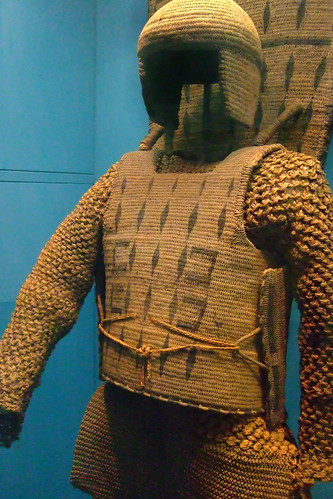 |
| Hawaiians would have likely only worn the vest |
Finally the Hawaiian body was covered in tattoos and was oiled up before battle. The former was to represent status and importance, as well as to intimidate, and the latter was to prevent any foe from getting a grip on him once the fight came down to martial arts.
Arms: Oil
See above
(Although I found a source stating that they had vambraces and shin guards, I haven't been able to find others to verify this so they will not be included)
Legs: Oil
See above
Blocking: Lua, Leiomano , Battle Cape
Martial arts will certainly help here, especially when fighting against close range weapons. The flat side of the Leiomano was actually big enough to be used as a makeshift shield at times, and the wood was hard enough that enemy weapons, even steel ones, won't be able to simply cut through it. As detailed earlier, the battle cape had multiple blocking and disarming functions, and essentially give the Koa a non-shielded blocking/attacking combo Ala sword and shield.
Tactics:
Tactics: Chaotic battlefield, Alot of low-level cooperation, Spatrial fighters,Opportunistic, Long then close, Phalanx.
Like most ancient warriors, the Koa would typically begin by expending their long range missiles (Pohaku) before moving into closer quarters. Their mid range game would be defined by the phalanx of Polulu (long spears). At this range the Koa pike men would strive to keep the enemy at bay, while the rest would either be throwing in their javelins(Ihe) or preparing for the inevitable breach. This order of engagement demonstrates a core Hawaiian concept of Spatial fighting, which dictated that the Koa always be aware of the distance from him and the enemy, the distance from the opponent's weapons(and their striking distance), along with his own weapons. Once said breach occurred the battlefield was a truly chaotic place.
The Hawaiian battlefield was a Very chaotic place, one where even the best centralized leadership quickly fell apart. War cries, the din of clashing weapons, howls of pain, and curses were all very much a part of the Hawaiian battlefield, and pretty much all rules were thrown out the window. Warriors would work together to double team others, and would target occupied enemies whenever possible;which would mean in this battle that if a Shaolin was in a fierce duel with a Koa, then its entirely possible that another one would dive in and tackle him, whereupon the two Koa would join forces to disembowel the poor monk.
Rules: Long then close, Phalanx, (once battle reaches its close quarter stage) no rules
Rules only apply for long and mid range fighting, once the battle reaches the close quarter stage there are literally no rules . Testicle severing , belly button stabbing, eye gouging, tripping, kicking, biting ect were all allowed in the heat of battle, along with the already mentioned double teaming.
Motivation: Island Hierarchy ( high chiefs, future king ect), Mana
Like most warriors the loyalty of the Koa would have been to their leaders first and foremost, whether they be high chief or later king. How the Koa were not like other warriors is their concept of mana or spiritual energy, which was unique to the cultures of the Pacific. Mana could be inherited or earned through great deeds and accomplishments, such as battlefield prowess. Hawaiians valued earned mana over inherited, and a warrior that shows great skill in battle would be treated with more respect and his voice would carry more authority. In addition his family's status would be elevated forever, giving his children a higher mana to grow up with then he did. The reverse is also true; fleeing from battle or being captured could result in your mana being stripped, which would place you in the kauwa (untouchable) class.
Training and Active Experience:Lifelong Training, Tested frequently, Quality of enemies:High
Training for the Koa began when they were children and continued on toward adulthood. They were tested frequently and harshly: in one test the student stood with arms outstretched, palms down, not lowering either arm as a second person walked on top of the right arm, over his head to the left arm, then back again to the right. Even after all these tests were completed and the Koa had become a full-fledged warrior he was expected to continually improve upon himself. And he had many opportunities too as he would be called upon to fight in pitched battles against both massed commoners and other Koa as equally trained as he is.
And finally
Martial Arts:War Sports, Lua
Finally the Martial Art section . Before we start on the actual martial art(Lua) lets begin with the sports that helped train them for war and why. Foot racing (kukini) would have enhanced his endurance and speed, while variations to this game like somersault racing and cartwheels would have helped out his agility and balance. In order to prove their bravery, ancient Hawaiians would dive from high cliffs into water or sled down steep hills. This would probably help take away some of the fear that hadn't been drilled out by training. Bowling (Ulu maika ) would have improved the strength and accuracy of the warriors (stone bowling disks) while Paddle Racing would again improve their endurance and strength. Rat hunting (the only time in Hawaiian society bows were used) also improved aim and accuracy. Finally there are the sports that directly impact battlefield prowess; Boxing (mokomoko) , wrestling (hakoko), tug of war (hukihuk), spear throwing ('o'o ihe) and fencing with staves (kaka la'au). Combine all this together and the Hawaiian Koa is already better then all other non-fictional warriors used so far at unarmed combat(Necromorphs and some Fellowship members would still own them). All of these sports would have went a long way to preparing hem for the ultimate sport; the sport of kings aka the "sport" of war .
Lua:
The native Hawaiian martial art was called Lua, and it is probably one of the deadliest martial arts to have been ever conceived.Since I don't think i could adequately convey Lua and the technique behind it to you, i am going to hand this one over to one of my sources. Here is a quote from one of my sources illustrating the components of Lua: "Lua, then, was the general name for a type of hand-to-hand fighting which not only included hakihaki (bone-breaking), but combined ha'a (dance), hakoko(wrestling), mokomoko/ku'i (boxing or punching), peku (kicking), aalolo (nerve pressure) to cause paralysis, and also the use of weapons. However, Hawaiian lua training encompasses far more than the master of blows, strikes, takedowns, holds, dodges and falls. It also included the game konane (similar to checkers), designed to teach strategic thinking. Additionally, lua involved lomilomi (massage) which was designed to enhance a lua warrior's performance in training or combat by keeping muscles from binding.
A martial dance found in various styles throughout Polynesia is the haka or ha'a, an old word for hula. Lua incorporated the haka to develop grace, agility, and strong leg muscles, necessary for battle. When dancing, the lua artists would lunge forward and back, dodge from side to side, and then whirl and pivot in unison to simulate combat. Their hakaarm motions were actually lua strikes in disguise. The 'olohe hula (hula master) tapped a "galloping rhythm" on a hue (gourd), called cues in chant, and interspersed surprise lines to test the dancers' concentration during training.
Haka, in reference to lua and dance, not only means to dance in ranks, but also to perch on a shelf. In other words, to shelve or save in reserve, but not to use. For generations, Hawaiian objects were haka, held and cherished, but not used. Lua is intangibly haka. This parallels the Japanese saying, "Jujitsu, like a sword within a scabbard, must be kept polished though unseen." Lua not only protects the warrior in life, but it also teaches and prepares him how to die well."
The source for Lua can be found at the bottom. Lua was taught and practiced at the dead of night by the Koa, in order to maintain utmost secrecy. Modern Lua is taught by two different schools: Pa' Kuialua taught by Jerry Walker, Richard Paglinawan, Mitchell Eli and Moses Kalauokalani along with Solomon Kaihewalu. Of the two Olohe Solomon's is less YouTube shy.
Unarmed Lua
Some Lua Weapons:
Mitchell Eli on Hawaiian Lua
Sources:
The Maui magazine here
Warrior Arts and weapons of Ancient Hawaii here
National Museum of Australia Canberra -Cook's Pacific Encounters here
A brief history of the Hawaiian people here National Museum of Australia Canberra -Cook's Pacific Encounters here
Martial Edge here
Kamahaha here
Coffee times here
Fanticus here
The Dark blade on impracticably of shark toothed throwing weapons here
Was captain Cook the first to discover Hawaii?
Hawaiian weapon classification guide here
Great site for purchasing weapons here
More information and Pictures of the Mahiole can be found here (along with info on cape)
Additional info on Mahiole here
Cape info here
Tattoo info here
Another Sid Cambell here
Lua Here
Konane here
Another Lua source here
Solomon's site here
Warriors by Terry Schappert (TV series)
Ancient Hawai'i by Herb Kawainui Kane (book)


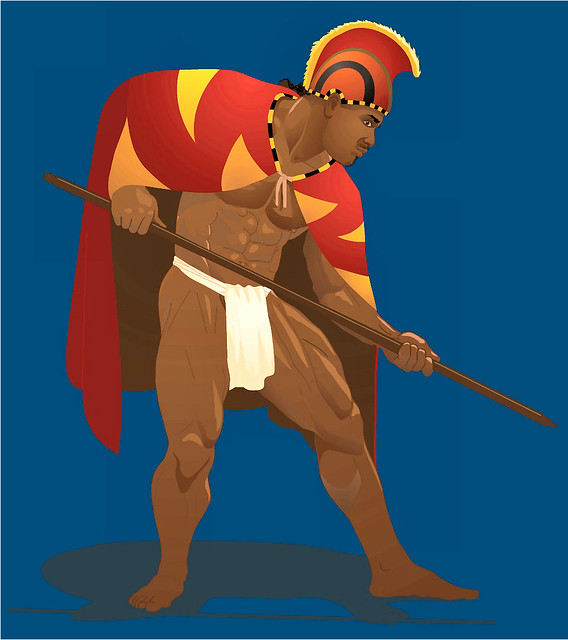






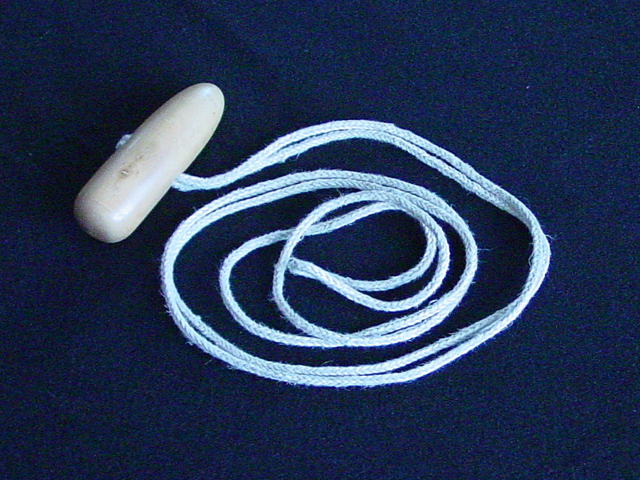




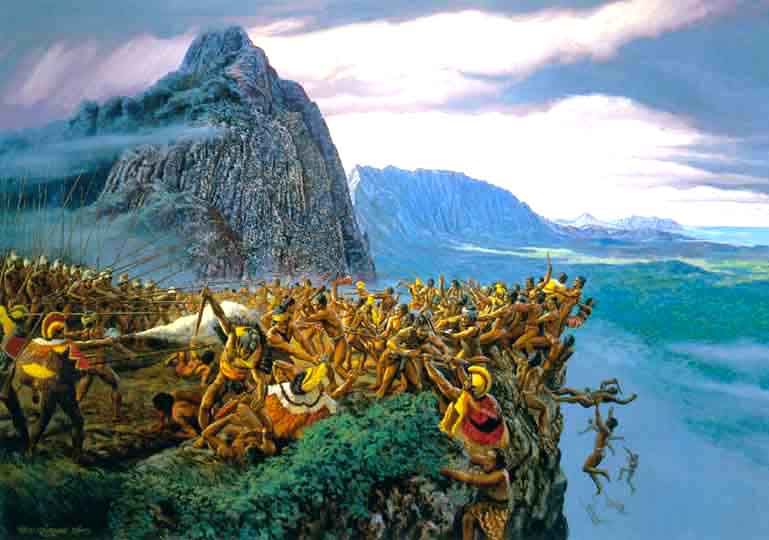



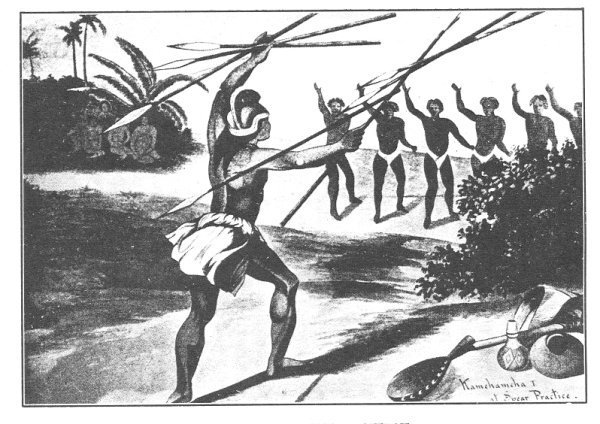
This is going to be a very good match up. I'm wandering if this will be one on one, or squad on squad? The pikes would end the Monk's when in a group, but one on one, the pike may not fare to well against the quick and slim Monk.
ReplyDeleteten on ten due to formations. And the monks have some weapons that may force the koa to abandon the phalanx.... anyway I only put this up briefly so I could get some feedback from a Hawaiian islander. More will come later.
ReplyDeleteHey man, this is a most fabulous page right here :) It's utterly amazing in fact. By reading this, I've gained such a greater understanding of the Kao culture. These guys were hard men and I'd rather not get into a fight with one of the Lua masters.
ReplyDeleteI really commend you for all the hard work you put into this research. I'm blown away and I bow before your excellence.
I really loved how well thought out and culturally sensitive this was. Victory for you, I can't wait to see what else you do ;)
tA
Master of the Boot
The Koa look really good. I really like warrior classes that use varieties of weapons, armour, and martial arts. I would love too see what else some of the more underrated warriors have to bring. And if you have the chance, Alexander the Great vs Julius Caesar. These guys would be perfect to fight another.
ReplyDeleteMaybe one day but not for a while. Eventually a back for blood may occur between the two.
ReplyDeleteGreat work Kyle, really great!
ReplyDelete